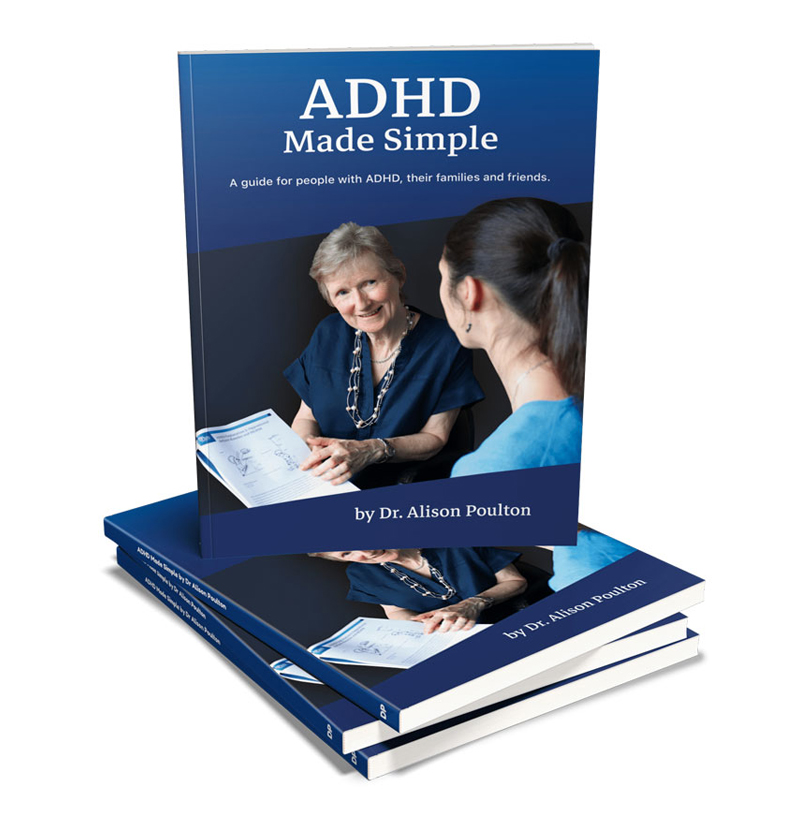
ADHD Made Simple is for anyone who has been diagnosed with ADHD as well as those who only suspect they may have it.
It’s also for those people – parents, siblings, partners, children, colleagues – who love, care for or work with someone who has a diagnosis or characteristics of ADHD.
“As someone who has, for over three decades, followed the large and complex research literature on ADHD, I know first-hand how difficult it is to distil that knowledge in a simple yet accurate manner. Can we achieve that goal when teaching about ADHD? Dr. Poulton’s answer is yes and her new book shows that she has achieved that goal.”
– Professor Stephen V Faroane, PhD and President of the World Federation of ADHD


In this chapter we describe a clinical model for ADHD: the Mental Effort Reward Imbalances Model (MERIM). We use this model to explain some of the behaviour commonly observed in children with ADHD and to guide approaches to treatment.
This is the academic version of the information contained in the Patient Explanation.

We reviewed 29 studies of growth in height in children with ADHD treated with stimulant medication. 11 of these were of poor quality and did not detect any slowing of growth. The studies with more rigorous design showed a deficit amounting to approximately 1 cm/year less growth than expected during the first 1-3 years of treatment.

We studied growth and bone age over the first 3 years of stimulant treatment in children with ADHD compared with their healthy siblings. Despite slower growth on treatment, the children with ADHD showed no delay in their bone maturation.

34 newly diagnosed children were treated with stimulant medication for ADHD. The initial appetite suppression was associated with fat loss and reduced bone turnover. Central body fat, lean tissue and bone increased more slowly over 3 years of treatment than would be expected for growth in height. This study shows that relatively minor reductions in weight on stimulant medication can be associated with long-term changes in body composition.

We reviewed different models for transitioning young people with ADHD to adult services. The reviewed studies showed that transition may not run smoothly and that the adult services are frequently inadequate. This may result in attrition from treatment or inappropriate discharge from care. The way forward may be a generic ADHD specialist service treating ADHD across the lifespan and avoiding the need for transition.